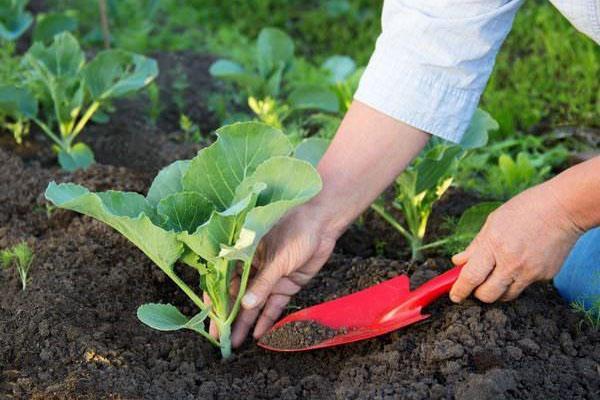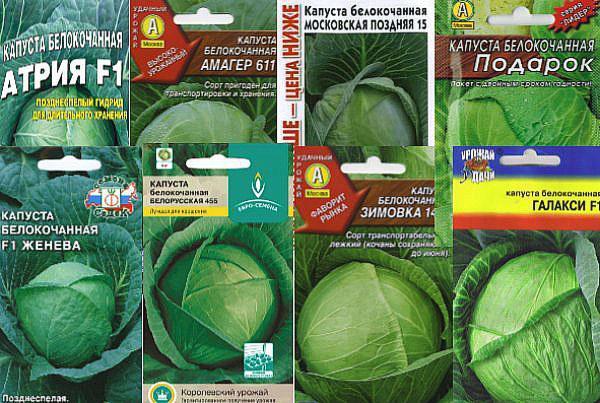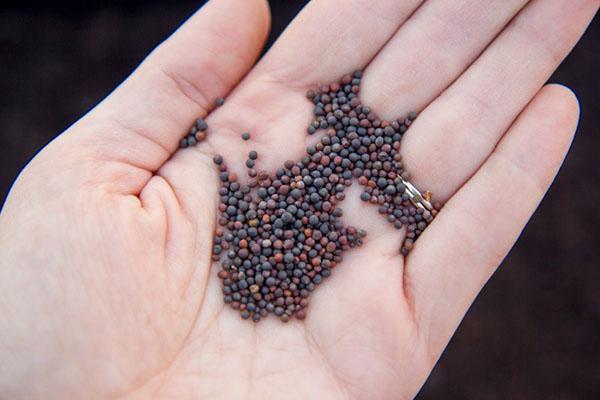We will learn from experienced gardeners 12 secrets of growing cabbage seedlings
 Knowing the 12 secrets of growing cabbage seedlings, you can get an excellent harvest from a small garden. Cabbage is one of the most unpretentious crops. It can grow in almost any soil and yield good yields every year. Cabbage leaves are used in cooking, cosmetology, and traditional medicine. However, this plant also needs care, watering, and regular pest control.
Knowing the 12 secrets of growing cabbage seedlings, you can get an excellent harvest from a small garden. Cabbage is one of the most unpretentious crops. It can grow in almost any soil and yield good yields every year. Cabbage leaves are used in cooking, cosmetology, and traditional medicine. However, this plant also needs care, watering, and regular pest control.
Selection and preparation of material

White cabbage varieties
White cabbage is the general name of the species, which includes a large number of varieties. They differ in taste and ripening times, so before buying seedlings or seeds, you should decide what they will be used for.
Choose a variety of cabbage depending on the purpose of its use.
Criterias of choice:
- Early varieties rarely yield rich yields and are poorly stored, so they are best eaten fresh. They are chosen because of the ripening rate - heads of cabbage grow to their maximum size in 60-80 days.
- Medium varieties have a dense head and last longer, but their leaves are not as juicy. Their ripening period is from 85 to 120 days.
- Late varieties grow 130 days after planting in the ground and more. Their heads are dense and can be stored until the next season. In addition, their leaves accumulate less nitrates than other species.
Early cabbage is consumed fresh, added to salads and hot dishes. Later varieties are well suited for conservation. It is better to grow them in separate beds.
What seeds are sure to germinate?
 Future yield indicators depend on the quality of the seeds. The easiest way to get the seed of the guaranteed desired variety is to harvest them from cabbage for the next year. When choosing it for the first sowing in the store, you should focus on several criteria:
Future yield indicators depend on the quality of the seeds. The easiest way to get the seed of the guaranteed desired variety is to harvest them from cabbage for the next year. When choosing it for the first sowing in the store, you should focus on several criteria:
- pure varieties are unpretentious, and hybrids are more productive;
- the ability to grow in certain climatic conditions;
- ripening time and yield;
- the tendency to crack heads is an undesirable factor.
Hybrid varieties are those that have emerged from the crossing of several varieties of cabbage. Such plants will not reproduce next year, so the seed must be bought annually.
There are also ready-made cabbage seedlings on sale. This way you can save time on growing it and get more confidence that it will take root in the beds.
Seed preparation
 There are products on sale for treating cabbage seeds before sowing. They are used to increase the germination of seed, its treatment against fungal and infectious diseases. Purchased seeds are especially in need of processing, since they may contain unknown types of infection. They are soaked in solution for several hours, then planted in the ground.
There are products on sale for treating cabbage seeds before sowing. They are used to increase the germination of seed, its treatment against fungal and infectious diseases. Purchased seeds are especially in need of processing, since they may contain unknown types of infection. They are soaked in solution for several hours, then planted in the ground.
The easiest method to disinfect seeds is to alternately dip them in hot and cold water. Temperature changes have a detrimental effect on different types of infection.
Planting cabbage
 The process of planting cabbage is equally important, since not all seeds germinate.Pay attention to the quality and composition of the soil, as well as other details. First, the seeds are sown at home in pots or trays, and the seedlings are then transplanted into greenhouse or in open ground.
The process of planting cabbage is equally important, since not all seeds germinate.Pay attention to the quality and composition of the soil, as well as other details. First, the seeds are sown at home in pots or trays, and the seedlings are then transplanted into greenhouse or in open ground.
Soil for cabbage
 Different varieties of cabbage are adapted to grow in different types of soil. This crop responds well to the presence of nutrients and minerals, so it is worth choosing a more fertile soil. Ready-made mixtures are sold in stores with the label "for white cabbage" - they are well suited for germinating seeds.
Different varieties of cabbage are adapted to grow in different types of soil. This crop responds well to the presence of nutrients and minerals, so it is worth choosing a more fertile soil. Ready-made mixtures are sold in stores with the label "for white cabbage" - they are well suited for germinating seeds.
At home, you can prepare a universal soil for high yields of cabbage. It will consist of several parts:
- 1 kg of earth;
- 1 kg organic fertilizers (compost, humus);
- 1 spoon of charcoal per 1 kg of finished substrate.
Cabbage grows poorly on acidic soil. To alkalize it, you can use wood ash, dolomite flour, carbonates or slaked lime.
Planting timing
 For cabbage to give a good harvest on time, it is important to plant it on time. This indicator depends on the variety of the crop and on the timing of its ripening:
For cabbage to give a good harvest on time, it is important to plant it on time. This indicator depends on the variety of the crop and on the timing of its ripening:
- early species should be planted on seedlings (not in open ground) before March 25;
- medium varieties - from March 25th to April 25th;
- late varieties until April 25th.
Cabbage will take root well in the beds if the soil warms up well by the time of planting
On average, at least 50 days should pass from the moment the seeds are planted for seedlings to the opportunity to transplant them into open ground. The timing will vary slightly depending on the variety of cabbage. They should get to the garden only when the soil is completely warmed up after winter.
Seedling care
 The method of growing cabbage from seed to seedlings at home requires more time and attention than using hoods and shelters. However, in this way the plants can receive full care in the early stages. To obtain a higher yield, it is important to select the most viable representatives of the variety. The process takes place in several stages:
The method of growing cabbage from seed to seedlings at home requires more time and attention than using hoods and shelters. However, in this way the plants can receive full care in the early stages. To obtain a higher yield, it is important to select the most viable representatives of the variety. The process takes place in several stages:
- sowing seeds in common trays;
- thinning emerging seedlings so that each of them occupies no more than 2 cm of area;
- after 2 weeks - picking seedlings, that is, removing them until each plant is 3 cm;
- after another 2 weeks - transplanting seedlings into separate pots.
If it is not possible to thin out seedlings, you can place each seed in a separate container or cell.
Watering, light mode and temperature
 The quantity and quality of the crop directly depends on the conditions for growing cabbage. It is worth choosing those varieties that adapt well to weather conditions in a particular climatic zone.
The quantity and quality of the crop directly depends on the conditions for growing cabbage. It is worth choosing those varieties that adapt well to weather conditions in a particular climatic zone.
At home or in greenhouse conditions, you can not be guided by the temperature and rainfall outside.
There are general requirements for all types of white cabbage seedlings:
- lighting - at least 12 hours, it is useful to use lamps;
- watering - the soil must be moistened regularly, but it must not be waterlogged;
- temperature regime - when shoots appear, the air temperature during the day should be up to 20 degrees, then it can be slightly reduced to harden the shoots.
 The variety is not important for growing cabbage in a greenhouse. Here you can create optimal conditions and get a harvest, including in winter. However, setting up an irrigation and lighting system will be a top priority.
The variety is not important for growing cabbage in a greenhouse. Here you can create optimal conditions and get a harvest, including in winter. However, setting up an irrigation and lighting system will be a top priority.
The need for feeding
 Fertilizers are mineral and organic substances that are used by plants to grow and maintain vital processes. Each of the minerals is responsible for certain phases of the growing season, so the composition of the dressings in different periods may differ. So, nitrogen affects the formation of green mass of crops, potassium and phosphorus are needed more during flowering and fruiting. Additional trace elements strengthen the root system, increase plant resistance to pests and weather conditions.
Fertilizers are mineral and organic substances that are used by plants to grow and maintain vital processes. Each of the minerals is responsible for certain phases of the growing season, so the composition of the dressings in different periods may differ. So, nitrogen affects the formation of green mass of crops, potassium and phosphorus are needed more during flowering and fruiting. Additional trace elements strengthen the root system, increase plant resistance to pests and weather conditions.
Mineral fertilizers are absorbed faster by plants than organic ones.
Fertilizers for cabbage seedlings are applied three times. The first procedure is carried out at least a week after the pick, and the subsequent ones - with an interval of 2 weeks. The approximate composition of the fertilizer (per 10 liters of water) will be as follows:
- 2 g of ammonium nitrate (nitrogen source);
- 2 g of potassium preparations;
- 4 g superphosphate - powder based on phosphorus.
Before planting in open ground, you can slightly change the concentration of substances. Potassium affects the formation of the root system, so its amount is increased to 8 g per 10 liters of water. The level of nitrate fertilizers is reduced to 3 g per 10 liters - these substances can accumulate in the leaves, so they can be applied no later than 2 weeks before harvest.
There are commercially available complex mineral mixtures designed specifically for cruciferous plants. They are more convenient to use, but also require adherence to dosages. Formulations can be sold as dry powder or granules, watering or spraying liquid.
Hardening before planting
 So that transplanting to open beds does not turn out to be stress for the seedlings, it is gradually hardened. The process begins 10 days before her disembarkation. At first, you can briefly reduce the temperature in the room by opening windows and vents, and after a week, containers with seedlings can be left on the balcony overnight.
So that transplanting to open beds does not turn out to be stress for the seedlings, it is gradually hardened. The process begins 10 days before her disembarkation. At first, you can briefly reduce the temperature in the room by opening windows and vents, and after a week, containers with seedlings can be left on the balcony overnight.
Disease and pest control
 Good cabbage varieties with high yields can suffer from pests, fungi, or other types of infection. Emergency treatment of seedlings is carried out, if necessary, with high doses of fungicides. For prevention, it is enough to add wood ash to the seedling soil - it has a pronounced antibacterial and antifungal effect. It will help protect plants from blackleg, various forms of root rot.
Good cabbage varieties with high yields can suffer from pests, fungi, or other types of infection. Emergency treatment of seedlings is carried out, if necessary, with high doses of fungicides. For prevention, it is enough to add wood ash to the seedling soil - it has a pronounced antibacterial and antifungal effect. It will help protect plants from blackleg, various forms of root rot.
Cabbage seedlings require just as much attention as adult plants in the garden. During this period, you can choose the largest and most resistant representatives, treat them from pests, and provide them with a supply of nutrients. After competent preparation, they will grow large and juicy, retain all the best varietal qualities.